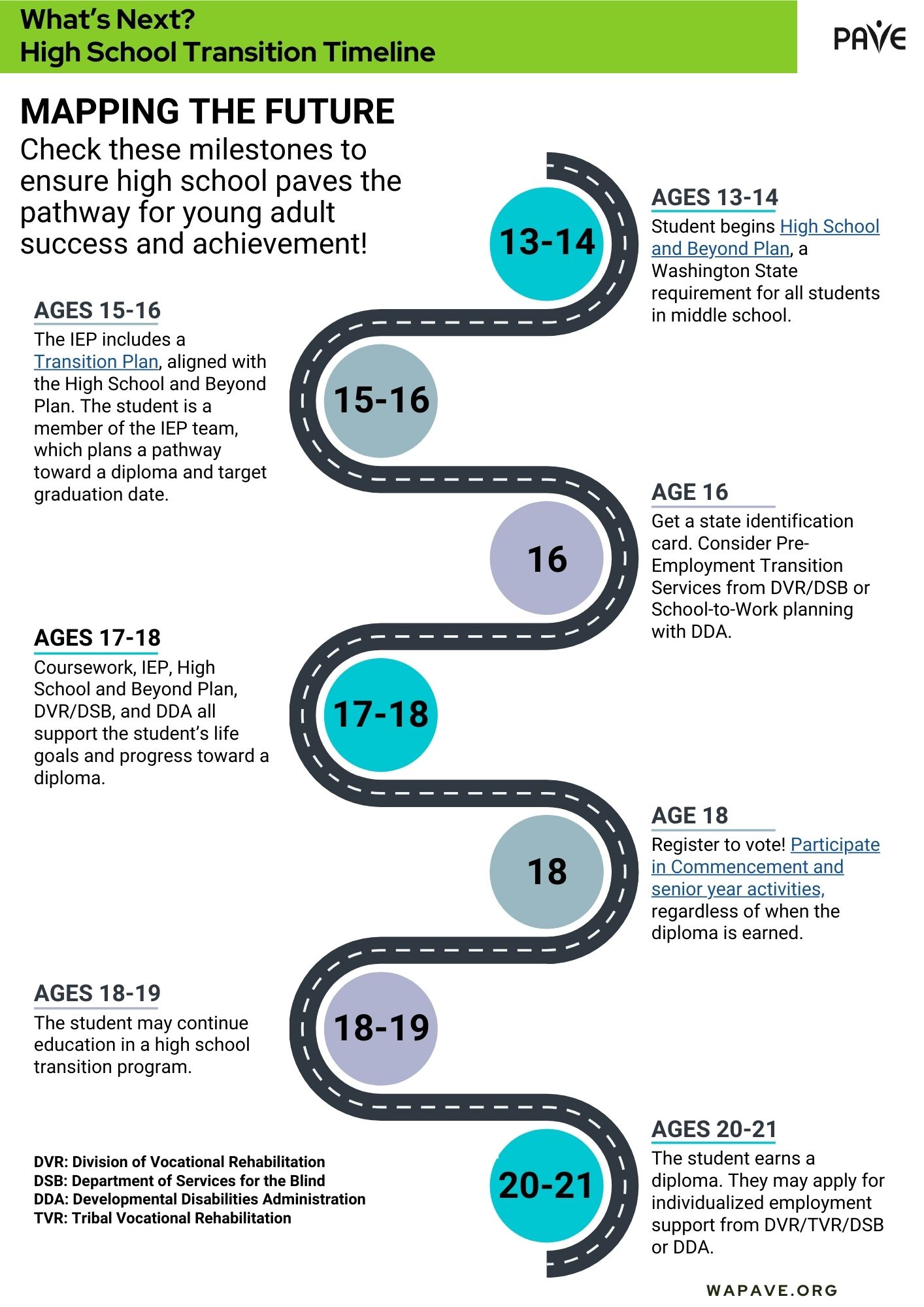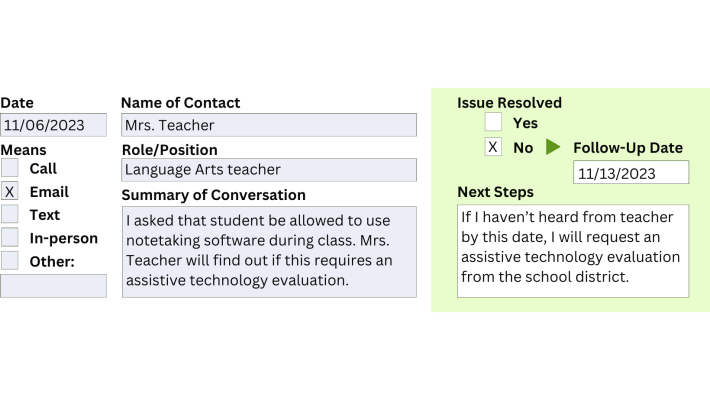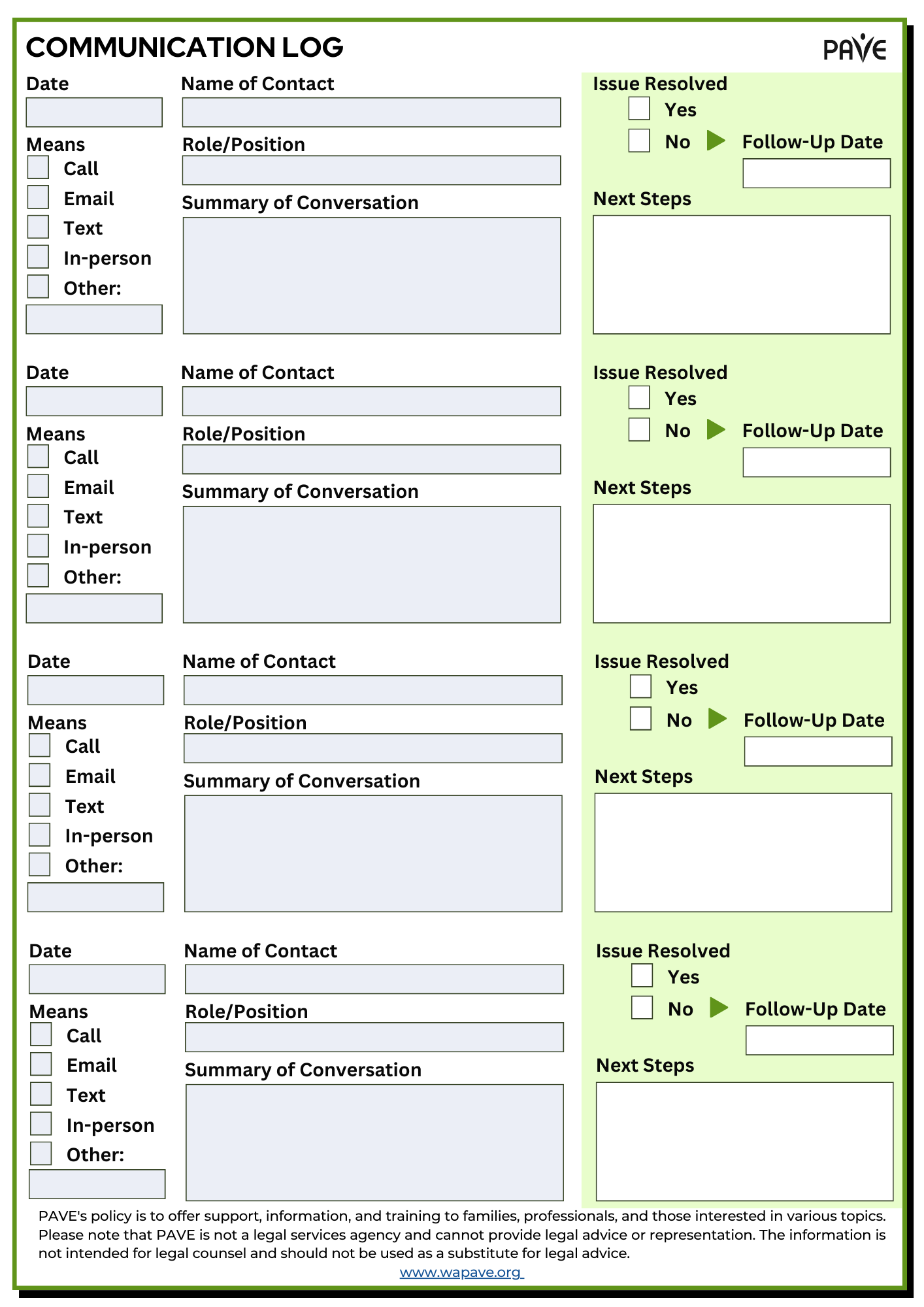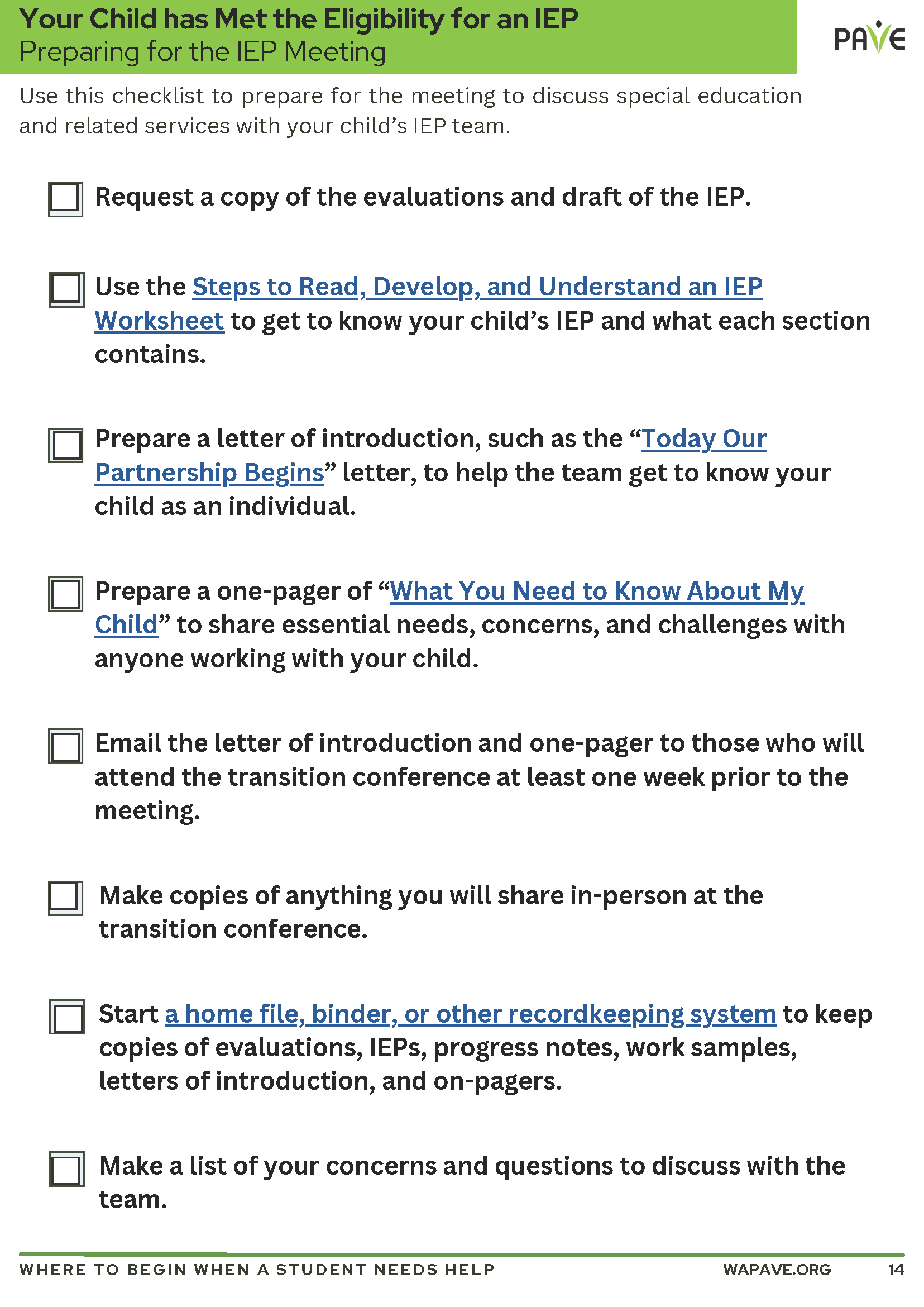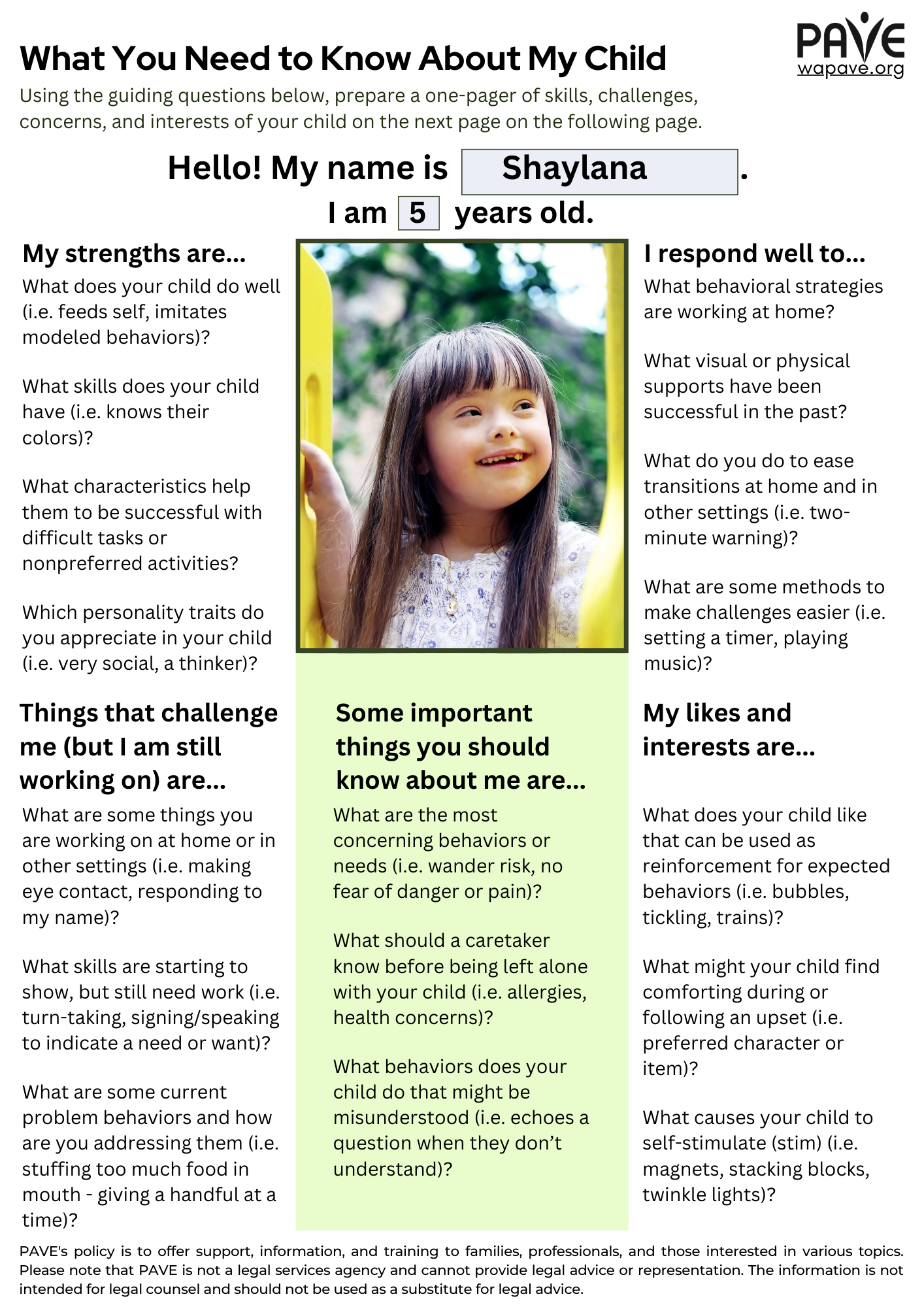Use this step-by-step checklist to track your child’s progress through the evaluation process.
Child Find is the requirement that all school districts must identify all children within their boundaries, ages birth through 21 who have disabilities. Any child can be brought to the attention of a school district by any person (parent, school personnel, or others), if there is concern about how the child learns or functions in school. Evaluation is the process used to determine if a student is eligible for services and in what area(s) services need to be provided. Washington implements the Individuals with Disabilities Act (IDEA) regulations governing evaluation for special education in WAC 392-172A.
Step 1: Write a letter requesting an evaluation for an IEP.
Keep a copy for your student’s home file. Mail the letter to the school principal and district special education administrator return receipt requested, or get a “received” signature when you hand-deliver the letter to the school office. Your letter of request sets a timeline in motion (WAC 392-172A-03005), giving the school district 25 school days to respond.
Keep the following dates in mind:
- Date of Mailing
- Date Received
- Add 25 school days from the date received
- Response due
Step 2: Review the written response from the school, known as the prior written notice (PWN).
The school will provide a written response regarding their decision to evaluate or deny the request, along with a copy of the procedural safeguards – a document outlining your rights and information about the appeal process if the evaluation is denied. If the school denies your request to evaluate, carefully review the reasoning behind the decision and consider your options as laid out in the procedural safeguards.
The Individuals with Disabilities Education Act (IDEA) requires that schools give parents or guardians of students who may be eligible for special education an explanation of their rights, called procedural safeguards. OSPI has shared the statewide procedural safeguards in many languages on their website. You may also access the procedural safeguards for your child’s school on the district website.
The procedural safeguards include the process for resolving disputes between the school district and the parent. If a school district denies a parent’s request to evaluate their child for special education needs, these safeguards give the parent options to ask for help or appeal the decision.
Step 3: Sign the school district’s consent form giving permission to evaluate.
The evaluation will not begin until you have provided written consent. Usually, consent must be given by signing a specific consent form provided by the school or district office. If the parents refuse to give consent, the student remains in general education without services.
Step 4: Review the list of areas the school intends to evaluate.
Evaluation must be done in all areas related to the suspected disability, per WAC 392-172A-03020. More than one test or procedure must be used to determine the student’s eligibility or disabling condition and/or to determine the student’s appropriate program. Families can request additional areas to include in the evaluation, including a Functional Behavioral Assessment, for example.
The school must notify parents of the time and place of any meeting, which discusses eligibility, evaluation, or identification of their child as a student with a disability. Parent participation is a protected right (WAC 392-172A-05001).
Step 5: Gather requested information and documentation.
Depending on a student’s suspected areas of disability (see categories listed below), the district may need medical information. However, the school cannot delay the evaluation while requiring parents to get that medical information.
Step 6: Schedule medical evaluations as needed.
A school cannot require a parent to provide a medical diagnosis to evaluate a student. However, a diagnosis can provide helpful information. The school could request a medical evaluation, at no cost to the parent, if medical information would support decision-making.
If medical information is necessary for an eligibility determination, the district must pay for the outside evaluation. OSPI includes more detail about these requirements in a Technical Assistance Paper.
Step 7: Transport your child to any evaluations conducted outside of their regular school day.
A team of individuals evaluates the child. Members of this team include, but are not limited to: therapists, psychologist, school nurse, special education teacher, regular education teacher and parent. Each professional team member must have the necessary credential in his/her area of expertise.
Tests must be administered in the student’s primary language or mode of communication and must not be culturally or racially biased. Tests must be administered by qualified personnel and in conformance with the instructions of the test producer.
Step 8: Request a copy of the evaluation report to review before the eligibility meeting.
An evaluation report must be given to the parents. It contains information about the evaluation, what tests were given, the results, implications for programming, and recommendations.
Step 9: Carefully read the evaluation report and the results of each evaluation.
An evaluation report must be given to the parents. It contains information about the evaluation, what tests were given, the results, implications for programming, and recommendations.
Step 9: Carefully read the evaluation report and the results of each evaluation.
If parents do not agree with the results of the evaluation, they can request an independent educational evaluation (IEE), at public expense. This should be done in writing because this request begins a 15-day timeline for response from the school district. The only way the district can deny the request is by calling for a due process hearing within 15 calendar days to show their evaluation is appropriate. Use this Sample Letter to Request an IEE to draft your request.
If a child with a disability is ineligible for an IEP, they may be eligible to receive accommodations and modifications under Section 504.
Note that a medical diagnosis does not automatically mean a student needs a 504 Plan. Doctors cannot prescribe a 504 plan—only the 504 team can make that decision. However, the 504 team must consider all information provided as part of its evaluation process. Regulations concerning evaluation for services under Section 504 are contained in the Nondiscrimination Rehabilitation Act of 1973, Section 504 and are referred to in WAC 392-172-02000.
PAVE’s policy is to offer support, information, and training to families, professionals, and those interested in various topics. Please note that PAVE is not a legal services agency and cannot provide legal advice or representation. The information is not intended for legal counsel and should not be used as a substitute for legal advice.
